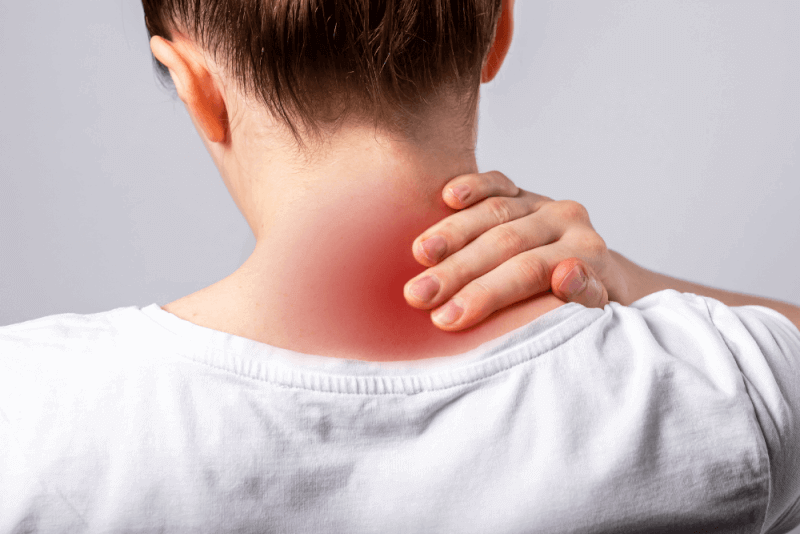30-Second Summary
- Elephantiasis is characterized by abnormal swelling in the hands and feet, requiring prompt treatment.
- The disease is diagnosed through various tests, with symptoms worsening as the condition progresses.
- Treatment includes methods to facilitate lymphatic flow and prevent infections, with medication also available.
- If untreated, the disease can lead to skin infections, sepsis, lymph leakage, skin changes, and, rarely, cancer.
What is Elephantiasis (Lymphedema)?
Elephantiasis, commonly known as lymphedema, is a condition caused by issues within the lymphatic system. The fluid between cells is called lymph fluid, and the lymphatic system controls this fluid and is an essential part of the immune system.
The most characteristic feature of elephantiasis is abnormal swelling in the hands and feet. These swellings not only cause functional damage but also have a significant psychological impact on patients. To prevent these complications, treatment should begin as soon as possible.
Diagnosis of Elephantiasis (Lymphedema)
Patients typically visit healthcare facilities due to swelling in their hands and feet. A detailed medical history is taken from patients presenting with these symptoms, including past illnesses and medications. If elephantiasis is suspected, various tests are conducted.
The primary test is lymphoscintigraphy, which visualizes the flow of lymph fluid. Additionally, patients may be asked to undergo MRI and CT scans. Since the swelling in the feet could be due to circulatory issues, Doppler ultrasound may also be requested. Finally, lymphangiography, which involves X-rays with a contrast dye, may be conducted.
Symptoms of Elephantiasis (Lymphedema)
In the early stages of lymphedema, lymphatic system dysfunctions may not present any symptoms. In some cases, symptoms may appear in ways that do not initially suggest elephantiasis. However, as the disease progresses, distinctive signs of lymphedema become apparent. Common symptoms include:
- Swelling in various parts of the body
- A feeling of heaviness in the legs
- Tightness in the arms and legs
- Weakness and pain in the arms and legs
- Rings, socks, shoes, and pants fitting tighter than before
- Loss of flexibility and mobility in the wrists
- Hardening and cracking of the skin on the feet and ankles
- Thickening of the lower legs, giving them an elephant-like appearance
In the early stages of the disease, swelling in the hands and feet disappears upon waking but returns as the day progresses. This is a characteristic symptom of the initial stage of the disease.
In the advanced stages, the elephant-like appearance becomes permanent and is highly resistant to treatment, making it prone to infections.
Causes of Elephantiasis (Lymphedema)
Most causes of lymphedema are not congenital, although a small percentage are genetically inherited. The most common cause of acquired elephantiasis is damage to the lymphatic system due to previous treatments, particularly surgeries and radiotherapy for cancer. The risk of developing elephantiasis is especially high in patients undergoing treatments for breast cancer. In addition to cancer treatments, surgeries on lymphatic pathways and infections that damage lymphatic vessels can also lead to lymphedema. Other causes include:
- Fungal infections
- Trauma
- Infections
- Parasites transmitted by mosquitoes
Treatment Methods for Elephantiasis (Lymphedema)
There is currently no treatment that can completely cure lymphedema. However, there are treatment methods that control symptoms and prevent the disease from progressing.
The primary treatment for patients with elephantiasis focuses on facilitating lymphatic flow. These treatments aim to minimize swelling and reduce the complications caused by the disease. This treatment is known as decongestive lymphatic therapy and is the primary treatment for the disease.
In treating lymphedema, it is also essential to prevent infections, so regular monitoring and adherence to antibiotic regimens are crucial. Additionally, patients should seek help from dermatologists to learn how to maintain proper skin care and hygiene, reducing the risk of infection.
Another method used to reduce symptoms is lymphatic drainage massage, which stimulates the lymphatic system and accelerates lymph flow, reducing swelling. This can significantly improve patients' comfort in their daily lives.
Surgery for Elephantiasis (Lymphedema)
In advanced cases, surgery may be an option to improve patients' quality of life. Microsurgery is used to correct minor deformities or partial blockages, while more severe cases involve procedures to redirect accumulated lymph fluid to healthy areas. The latest development in lymphedema treatment is the tunneling operation, which continuously channels lymph fluid from the legs to healthy areas.
Surgery Overview
Duration of Surgery: 2-5 Hours
Type of Anesthesia: General, Local
Hospital Stay: 1-5 Days
Return to Work: 2-6 Weeks
Exercises for Elephantiasis (Lymphedema)
Another recommended treatment for elephantiasis is physical therapy. Strengthening long muscles improves lymphatic flow, so patients should follow an exercise program tailored to their age and needs.
Medication
Medications are used, especially in cases of elephantiasis caused by parasites. Drugs like diethylcarbamazine are used to kill microscopic worms in the blood. Additionally, patients are prescribed another drug group called DEC ivermectin, which needs to be taken once a year for long-lasting results.
What Happens If Elephantiasis Is Left Untreated?
The symptoms of elephantiasis must be controlled, as the chronic and progressive nature of the disease can severely affect daily life and lead to other health problems if not managed.
Skin Infections
In this condition, known as cellulitis, trapped fluid between tissues creates a fertile ground for bacteria. Even minor injuries can lead to severe infections. The skin becomes swollen and red, and patients experience pain and warmth in the affected area. To quickly treat skin infections, doctors may prescribe antibiotics for emergency use.
Sepsis
If skin infections are left untreated, the infection can spread to the bloodstream, triggering sepsis. Sepsis occurs when the body attacks its tissues to fight infection, requiring urgent medical attention as it is life-threatening.
Lymph Leakage
Swelling caused by elephantiasis can lead to skin cracks, resulting in lymph fluid leakage. Early treatment is crucial to prevent this complication.
Skin Changes
In severe cases of lymphedema, the skin in the affected limbs hardens and thickens, resembling elephant skin.
Cancer
In rare cases, severe lymphedema can lead to soft tissue cancer.
Other complications of untreated lymphedema include:
- Functional impairments due to swelling in the limbs
- Reduced quality of life
Diet for Elephantiasis (Lymphedema)
Proper nutrition and adequate fluid intake can significantly reduce the symptoms of lymphedema. Following a balanced diet can reduce lymph fluid production by 2 liters per day. Patients should focus on the following dietary guidelines:
- Drink at least 2.5 liters of water slowly throughout the day.
- Eat fresh foods and avoid processed foods.
- Make plant-based foods the foundation of your diet.
- Adopt an antioxidant-rich diet and maintain a balanced diet.
- Consume plenty of Swiss chard, spinach, tomatoes, arugula, and leeks.
- Focus on fruits, especially strawberries, raspberries, blueberries, cherries, and citrus fruits.
- Eat fish, particularly tuna, mackerel, and salmon, at least twice a week.
- If recommended by your doctor, take Omega-3 supplements as directed.
- Ensure optimal levels of vitamins A, B6, B12, C, D, E, and K in your body, and take vitamin supplements if necessary.
- Increase your intake of probiotic foods.
- Avoid or limit foods high in sodium, keeping daily salt intake to no more than 5 grams. This is particularly important because sodium causes fluid retention in the body, disrupting bacterial balance and increasing the risk of infection.
- Adding a small amount of black pepper to turmeric can help alleviate symptoms.
- Limit your intake of nuts.
- Avoid animal fats. Instead, use avocado, olive oil, butter, and coconut oil, but limit your overall fat intake.
- Animal-based foods can thicken lymph fluid, so it's recommended to avoid them as much as possible.
- Avoid products containing refined sugar.
- Consume high-quality protein from seeds and plants.
- Avoid soy, as it can negatively affect estrogen levels.
- Follow a gluten-free diet.
- Maintain a balance of magnesium, zinc, and selenium, and take supplements if necessary.
- Avoid alcohol.
- Maintain a healthy weight range.
It's important not to skip meals. Patients with weight issues should reduce their portion sizes and increase the frequency of their meals. Adequate protein intake is crucial, as insufficient protein can lead to increased fluid retention. For dietary guidance, patients are advised to consult a nutritionist.
Types of Elephantiasis (Lymphedema)
Elephantiasis is classified into two types based on its development.
What is Congenital (Primary) Lymphedema?
In congenital lymphedema, the malfunction of the lymphatic system is present from birth. Problems in the lymphatic vessels or nodes cause the development of elephantiasis.
Symptoms of Congenital (Primary) Lymphedema
Although primary lymphedema is a congenital condition, its symptoms usually appear during adolescence. The most characteristic symptom is noticeable swelling.
Causes of Congenital (Primary) Lymphedema
Primary lymphedema occurs due to the underdevelopment or absence of lymphatic vessels. Changes in the lymphatic system as the patient ages are crucial factors in whether the disease manifests.
What is Acquired (Secondary) Lymphedema?
Secondary lymphedema is the most common type of elephantiasis, resulting from a disruption in the lymphatic system due to external factors.
Symptoms of Acquired (Secondary) Lymphedema
The most characteristic symptom of secondary lymphedema is the appearance of "elephant feet." Other symptoms are similar to those of general lymphedema.
Causes of Acquired (Secondary) Lymphedema
The primary cause of secondary lymphedema is the surgical removal of lymph nodes. Other causes include radiotherapy, trauma, cellulitis, certain tropical parasitic infections, and lymphangitis infections.
Secondary lymphedema most commonly occurs after breast and prostate cancer surgeries. The second most common cause is radiotherapy as part of cancer treatment.
Another factor contributing to secondary lymphedema is venous insufficiency, where the veins cannot function correctly. Venous insufficiency in the lower leg, which is farthest from the heart, puts excessive strain on the lymphatic system, leading to elephantiasis.
Finally, lymphedema can also result from lipedema, a condition characterized by excessive fat accumulation in the legs after menstruation and pregnancy, which puts pressure on the lymphatic system and leads to secondary lymphedema.









